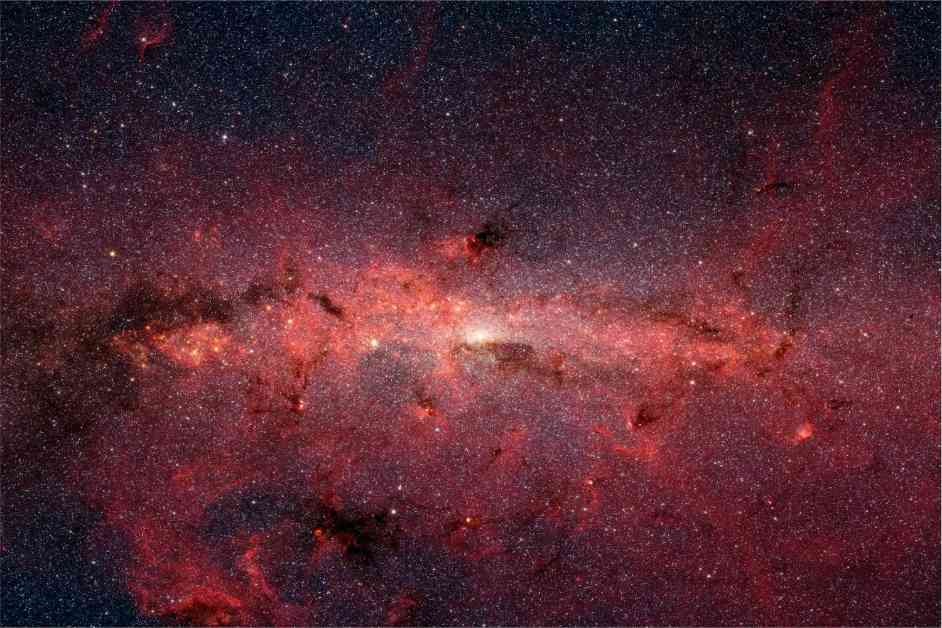The Milky Way is a vast galaxy filled with gas, dust, stars, and a massive black hole at its center. While we have a deep understanding of its components, it can be challenging to see the bigger picture of its structure. A new discovery by researchers from the National Institute for Astrophysics (INAF) in Italy has shed light on the giant magnetic halo that surrounds the Milky Way, potentially reshaping our knowledge of how our galaxy evolved.
In a study published in Nature Astronomy, the team of astronomers used data from over 10 different surveys across various wavelengths to uncover massive magnetized structures within the Milky Way’s halo. These structures extend over 16,000 light-years above and below the galactic plane, with organized magnetic fields forming thin filaments that stretch up to 150 times the width of the Moon.
The researchers believe that these magnetic structures are connected to the eROSITA bubbles, which were first detected in 2020 by the eROSITA X-ray telescope. These bubbles are made of hot gas and are thought to be related to the intense energy emitted by the supermassive black hole at the center of the Milky Way, as well as the explosive deaths of stars creating jets of hot gas.
The study’s lead author, He-Shou Zhang, highlighted the significance of these findings, stating that the magnetic fields in the Milky Way’s halo are closely linked to star-forming activities and galactic outflows. These outflows contribute to the formation of new stars and play a crucial role in the evolution of galaxies. The connection between galactic outflows and the Milky Way’s star-forming ring at the end of its Galactic Bar suggests a complex interplay between different components of our galaxy.
Gabriele Ponti, a researcher at INAF, emphasized the importance of studying galactic outflows in understanding the growth and evolution of galaxies. By observing these phenomena in the Milky Way, scientists can gain valuable insights into how galaxies like our own developed over time and their place in the universe at large.
Overall, this groundbreaking research highlights the magnetic nature of galactic halos and underscores the role of magnetic fields in shaping the evolution of galaxies. The Milky Way serves as a unique laboratory for studying these processes up close, providing valuable insights into the broader mechanisms at play in the universe.
In addition to this exciting discovery, recent cosmic collisions have also been found to impact the history of the Milky Way, further enriching our understanding of our galactic home and its evolution over time.











